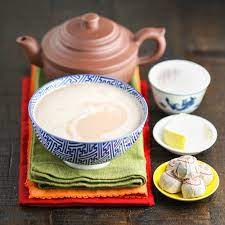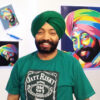Indians love their food with extra butter, be it kulchas, bun, sandwich or Pav Bhaji. But have you heard of tea with butter. We have had teas with extra cream “Malai” but never butter. The butter Tea is a known delicacy of the Tibetan region.
Yes this Butter tea, also known as po cha, this tea is made by adding butter and salt to tea. Butter tea is an essential part of Tibetan life. Butter tea probably originated in the Himalayan region between Greater Tibet and the Indian subcontinent. Tibetans like to enjoy bowlfuls of this beverage and is one beverage that is often served to guests.
Nomads are said to often drink up to 40 cups of it a day. Since butter is the main ingredient, butter tea is a very warming and filling drink, providing lots of caloric energy and is particularly suited to high altitudes. The butter also helps prevent chapped lips. Butter tea is also an accompaniment for eating Tsampa, a Tibetan flour porridge made with barley or wheat flour.
In Tibet, the traditional process of making butter tea can take a long time and is pretty complicated. A special black tea that comes from an area called Pemagul in Tibet, is used to make this tea. The tea comes in bricks of different shapes, and the tea is crumbled and boiled for half a day, achieving a dark brown color. The concentrate liquid is called Chaku, this then skimmed, and poured into a cylinder with fresh yak butter and salt which is then shaken. The result is a purplish liquid that is about the thickness of a stew or thick oil. It is then poured into clay tea-pots, or jars. Today cow’s milk and butter is also used to make this tea.
Another method is to boil water and add handfuls of the tea into the water, which is allowed to steep until it turns almost black. Salt is then added, along with a little soda if wanted. The tea is then strained through a horse-hair or reed colander into a wooden butter churn, and a large lump of butter is added. This is then churned until the tea reaches the proper consistency and transferred to copper pots that sit on a brazier to keep them warm. When a churn is not available, a wooden bowl and rapid stirring will suffice.
Nowadays, when tea leaves, yak butter and wooden butter churns are not available, people often make butter tea using tea bags, different types of butter available in the market and a blender to churn.
According to the Tibetan custom, butter tea is drunk in separate sips, and after each sip, the host refills the bowl to the brim. Thus, the guest never drains his bowl; rather, it is constantly topped up. If the visitor does not wish to drink, the best thing to do is leave the tea untouched until the time comes to leave and then drain the bowl. In this way, etiquette is observed and the host will not be offended. The cups for drinking butter in Tibet are usually made of silver; some are made of gold. Tibetan people also use wooden bowls to drink tea. The wooden bowls are also set with gold, silver or copper. Furthermore, some Tibetan tea wares is made of jade. The gorgeous and expensive jade tea wares are handed down from generation to generation in a family. The teawares are also regarded as status symbols in Tibet.


